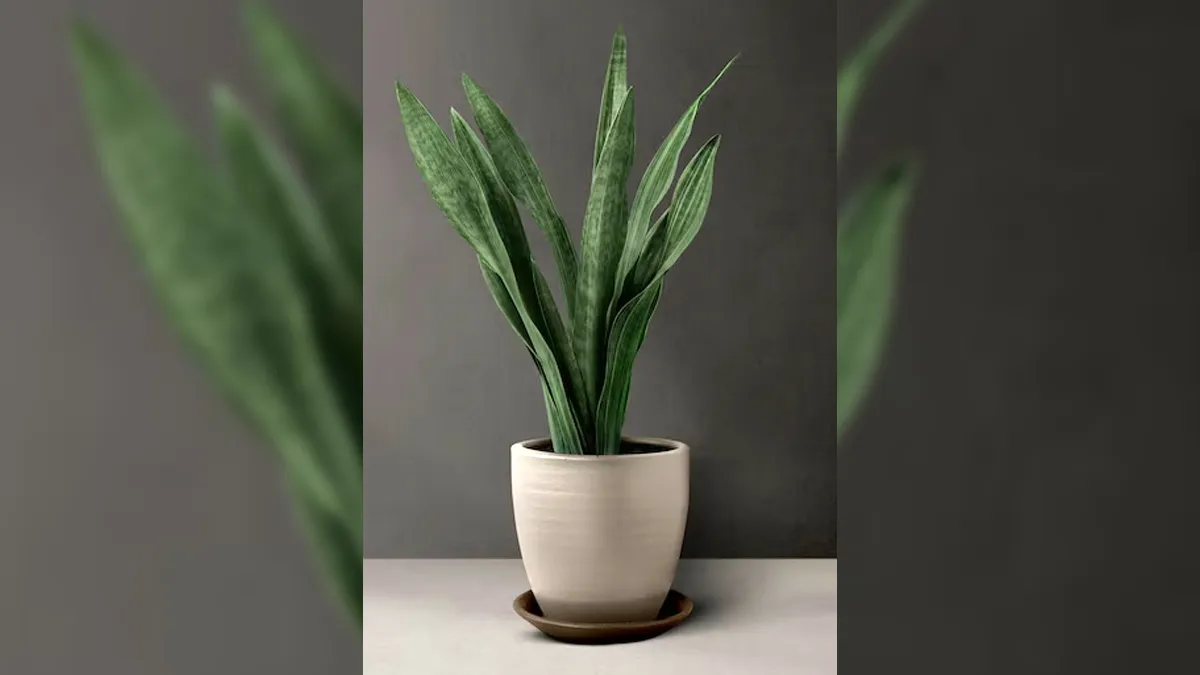
How To Take Care Of A Snake Plant: The Ultimate Guide For Beginners
The snake plant, commonly known as mother-in-law's tongue, is a popular and resilient houseplant characterised by its stiff, sword-like leaves. It comes in various varieties, many featuring green-banded or striped leaves with yellow or cream edges. This attractive and easy-to-care-for plant thrives in low light and can withstand drought, making it an ideal choice for spaces such as offices. Snake plants are perfect for beginners, as they adapt well to different growing conditions. This low-maintenance plant adds decorative flair when kept indoors. If you have a snake plant, here are some essential care tips to keep in mind.
Conditions For Growing A Snake Plant
To successfully grow a snake plant, it's important to provide the right conditions. These plants thrive in indirect light but can adapt to low-light environments as well; they can even handle some direct sunlight, though too much exposure may scorch their leaves. When it comes to watering, allow the soil to dry completely between waterings, as overwatering can lead to root rot. Using a well-draining potting mix, such as a cactus or succulent blend, is ideal for preventing excess moisture.
Snake plants prefer temperatures between 60°F and 80°F (15°C to 27°C) and can tolerate slightly cooler conditions, but should be protected from frost. They are versatile when it comes to humidity, thriving in a range of levels, though they favour drier air.

During the growing season in spring and summer, use fertiliser sparingly, opting for a balanced houseplant formula diluted to half strength. Lastly, make sure to choose a pot with drainage holes to prevent water from accumulating at the bottom. By following these guidelines, your snake plant will flourish and enhance your indoor space.
1
2
3
4
Don't Miss: How To Take Care Of A Jade Plant: Simple Tips For A Lush And Vibrant Plant
How To Take Care Of A Snake Plant
We reached out to Swaminathan, a local gardener from Dwarka, who shared some easy tips on how to care for a snake plant.
1. Light Needs
Bright Indirect Light: Snake plants grow best in bright, indirect light.
Adaptability: They can also thrive in low-light conditions, making them suitable for darker areas of your home.
Direct Sun Exposure: While they can tolerate some direct sunlight, excessive exposure may damage the leaves.
Don't Miss: How To Care For Your Tulsi Plant At Home: Essential Tips
2. Watering Guidelines
Drying Out Soil: Allow the top 1-2 inches of soil to dry completely before watering again.
Watering Frequency: Typically, water every 2 to 6 weeks, depending on the season and humidity levels.
Caution Against Overwatering: Avoid leaving the plant in water, as this can cause root rot. Ensure your pot has drainage holes.
3. Soil Composition
Drainage: Use a potting mix that is well-draining, like those meant for cacti or succulents.
DIY Mix: You can also make a mix by combining regular potting soil with sand or perlite.
4. Temperature and Humidity
Optimal Range: Keep temperatures between 60°F and 80°F (15°C to 27°C).
Frost Protection: While snake plants can tolerate cooler temperatures, protect them from frost.
Humidity Adaptability: They do well in various humidity levels but prefer drier air.

5. Fertilising
Seasonal Feeding: Fertilise during the growing season (spring and summer) to support growth.
Fertiliser Type: Use a balanced, water-soluble fertiliser diluted to half strength.
Monthly Application: Apply fertiliser once a month in the growing season and refrain from fertilising in fall and winter.
6. Potting and Repotting
Drainage Requirement: Choose a pot that has drainage holes to avoid excess moisture.
Repotting Frequency: Repot every 2-3 years or when the plant becomes root-bound.
Repotting Signs: Look for roots emerging from drainage holes or slowed growth as cues for repotting.
7. Pruning and Care
Trimming: Remove any damaged or brown leaves at the base to encourage new growth.
Leaf Maintenance: Occasionally dust the leaves with a damp cloth to remove dust and enhance light absorption.
8. Pest Control
Watch for Pests: Keep an eye out for spider mites, mealybugs, and scale insects.
Treatment Options: If pests are spotted, use insecticidal soap or neem oil. Regularly check the plant to catch infestations early.
9. Propagation Techniques
Using Leaf Cuttings: Propagate by taking leaf cuttings and letting them dry for a day before planting in soil.
Root Division: You can also propagate by dividing the root ball during repotting to create new plants.
By adhering to these care tips, your snake plant will flourish and enhance your living space!
Keep reading Herzindagi for more such stories.
Credits: Freepik
1
2
3
4